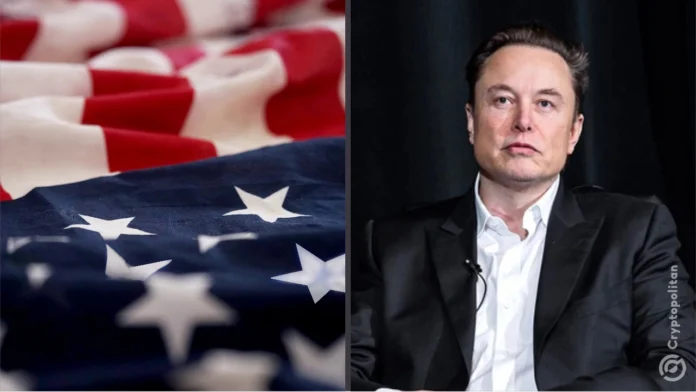Jai Hamid
Elon Musk and Vivek Ramaswamy are teaming up with President-elect Donald Trump to build a project designed to dismantle the U.S. government’s notorious red tape and bloated budget.
Trump is calling it the “Department of Government Efficiency”—DOGE for short. Yes, DOGE. Elon’s own homage to Dogecoin, the meme that became a crypto and then, somehow, a serious obsession for retail traders and Elon himself. It’s fitting, maybe even a bit absurd, but that’s the Elon way, isn’t it?
This isn’t your typical government agency, it’s not even a real department. DOGE is structured as an advisory body and will supposedly shut down by July 2026, sidestepping the need for congressional approval, which would be a nightmare.
Trump has thrown down a massive target for the para-agency: $2 trillion in cuts. He’s claiming DOGE will bring “advice and guidance from outside of government” and “create an entrepreneurial approach to government.”
And of course, that includes Elon’s flair for the absurd with a leaderboard to rank the dumbest examples of wasted tax dollars, promising a mix of “tragic” and “hilarious” finds. You can practically hear Elon’s familiar grin from here.
How much exactly is $2 trillion in government cuts?
Let’s not kid ourselves; $2 trillion in spending cuts is a mammoth goal. For context, the U.S. government’s annual spending is around $6.5 trillion, which means DOGE is gunning to slice off a third of the budget, every single year.
This, according to the president, is to identify and eliminate “massive waste and fraud” within the budget, something easier said than done. The Simpson-Bowles commission tried similar measures in 2010, aiming for $4 trillion over a decade by delaying retirement for Social Security and slashing health care costs.
But that went nowhere fast. Then there was the Supercommittee in 2011, tasked with finding a “grand bargain” on budget cuts, which also flopped.
So why do Trump, Elon, and Vivek think DOGE can succeed where others failed? Well, they’re betting on Elon’s penchant for breaking rules, or at least bending them. Trump is even ready to challenge the Impoundment Control Act of 1974, which restricts the president from withholding Congress-approved funds.
If Trump’s plan to bypass this rule goes through, DOGE would have unprecedented power to halt or redirect spending, potentially bypassing Congress’s traditional control over the purse. If there’s one thing these guys love to do, it’s blowing up the status quo.
Ethics? What ethics?
With Elon and Vivek on board, there’s already a question of conflicts of interest. By making them “special government employees,” Trump can avoid forcing either man to disclose or sell their assets. That means Elon’s billion-dollar stakes in Tesla and SpaceX (currently sitting on over $15 billion in federal contracts) aren’t going anywhere.
Vivek, a former biotech executive, is in a similar boat.
Their status as special government employees allows them to work up to 130 days with the federal government without the usual oversight. But they’ll still need to follow ethics rules that demand recusal from discussions affecting their own wallets, which could get tricky given Elon’s financial ties to federal agencies.
DOGE is set to run under the Federal Advisory Committee Act, a 1972 law that lets the president form committees to gather insights from the public and private sectors.
Trump’s executive order will add DOGE to the roughly 1,000 existing federal advisory committees, which last year cost the government about $399 million. That’s the same government spending Elon now wants to slash, so the irony isn’t lost on us here.
Transparency and the ‘leaderboard’ of government waste
The name DOGE might sound playful, but the transparency requirements for this operation are deadly serious. Federal law mandates that advisory committee meetings be open to the public, and Elon has promised all DOGE actions will be “posted online for maximum transparency.”
Trump is also targeting the Department of Education, planning to hand control of policy and funding back to the states. Republican Representative Darrell Issa, an ally of Elon, shared that Elon is particularly interested in rooting out Medicare fraud, a notorious area of government waste.
Fraud alone costs federal agencies between $233 billion and $521 billion each year. Medicare fraud, specifically, has ballooned over recent years, with fraudsters siphoning funds from programs meant for the most vulnerable citizens.
Add the COVID-19 relief packages, where a 2023 AP review found that 10% of the $4.2 trillion had been misappropriated or outright lost. Elon’s ambitions for DOGE tap into this well of waste, which he claims is ripe for slashing.
Since 2011, the Government Accountability Office (GAO) has pumped out report after report—14, to be exact—with over 2,000 recommendations to save money and reduce redundancies. So far, Congress has only followed through on about two-thirds of those, saving roughly $667.5 billion in the process.
Elon’s DOGE, then, is meant to pick up where these efforts have stalled, ideally driving the federal government toward a much leaner operation.
The Elon-Dogecoin connection
Dogecoin itself is having quite a run in the post-election crypto rally, surging nearly 20%. Since Election Day, the apex meme token has climbed a whopping 153%, surpassing XRP to become the sixth-largest crypto by market cap.
Meanwhile, Bitcoin is trading at around $92,000, with the broader crypto market staying largely steady in recent trading. The total market cap also reached a new all-time high at $3.14 trillion.
The rise of DOGE goes back to Elon’s tweets and memes, which turned a joke coin into a serious contender in the crypto market. His appearance on Saturday Night Live in 2021, where he called Dogecoin “a hustle,” temporarily sunk the price, but it didn’t diminish the coin’s popularity.
At press time, it was worth $0.3928 with a market cap of $57.6 billion.
